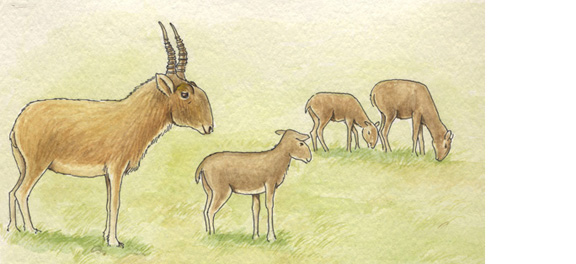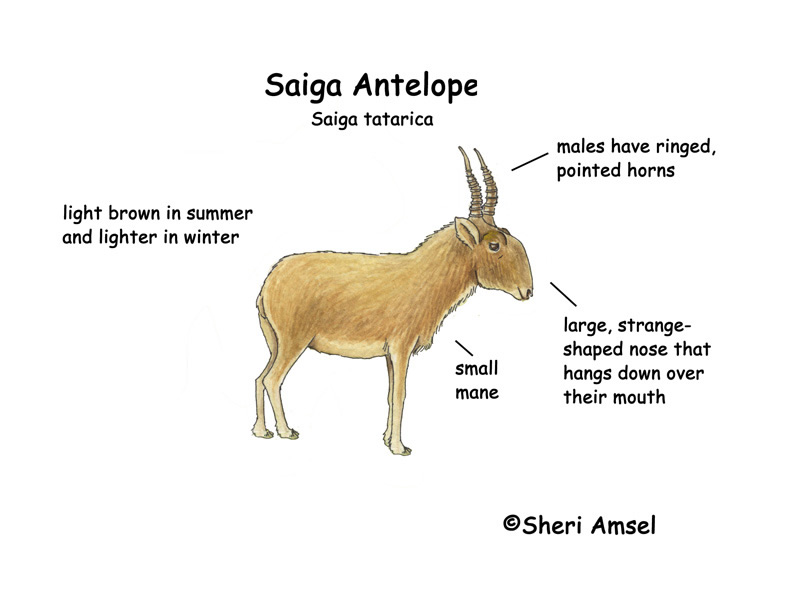

They are found on the steppes of Central Asia (northwestern Mongolia).
They live on the open, dry steppes (a type of semi desert grassland).
They are light brown in summer and lighter in winter with a small mane. They have a large, strange-shaped nose that hangs down over their mouth. It is believed that this helps in winter to warm the frigid air they breathe in before it reaches their lungs and in summer to filter out the dust they breathe in during migrations. Males have ringed, pointed horns.
They travel around in large groups, migrating north in summer and back south in winter. They can run up to 80mph when escaping predators.
They eat grass and shrubs.
They are killed by wolves and humans.
Males compete for groups of up to 30 females every fall during the “rut.” The fights they have often can leave one male dead and since none of the males eat during the rut many others die. As many as 9 out of 10 males can die during the fall rut. Females are pregnant for 4.5 months (gestation) and have 2 young.
They can live up to 10 years in the wild. They are listed as endangered.
Kingdom: Animalia
Phylum: Chordata
Subphylum: Vertebrata
Class: Mammalia
Order: Artiodactyla
Family: Bovidae
Subfamily: Antilopinae
Genus: Saiga
Species: Saiga tatarica
When you research information you must cite the reference. Citing for websites is different from citing from books, magazines and periodicals. The style of citing shown here is from the MLA Style Citations (Modern Language Association).
When citing a WEBSITE the general format is as follows.
Author Last Name, First Name(s). "Title: Subtitle of Part of Web Page, if appropriate." Title: Subtitle: Section of Page if appropriate. Sponsoring/Publishing Agency, If Given. Additional significant descriptive information. Date of Electronic Publication or other Date, such as Last Updated. Day Month Year of access < URL >.
Amsel, Sheri. "Antelope (Saiga)" Exploring Nature Educational Resource ©2005-2024. December 13, 2024
< http://www.exploringnature.org/db/view/Antelope-Saiga >

